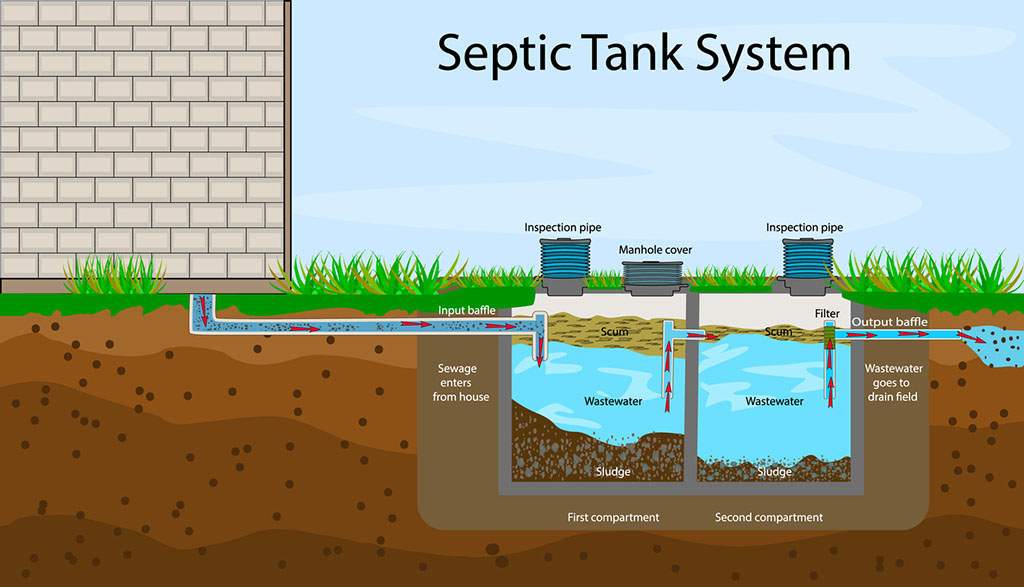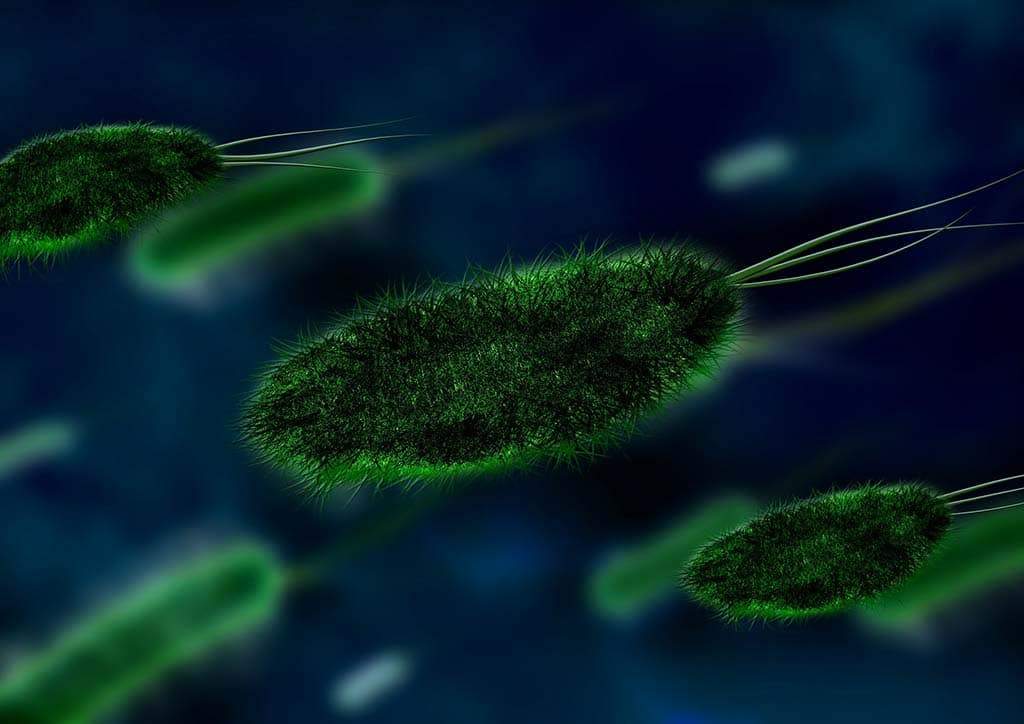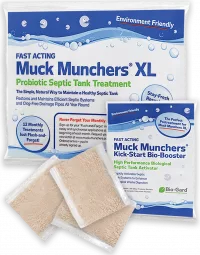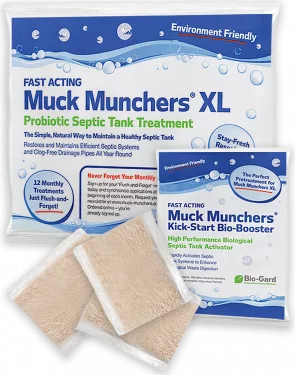How Does a Septic System Work?
One of the the most common questions we are asked is how does a septic system work? Whether you’ve just bought a home with a septic system, or if you have just installed a septic tank at your property, it’s natural that you are going to want to be sure how a septic system works.
Septic systems work quite a bit differently to what you’d expect from a traditional home or residential sewerage connected to the mains.
That said, a septic system doesn’t have to be complex, and it certainly isn’t something that should cause you major concerns in the future. In fact, many people swear by septic systems as they can be more affordable than mains sewerage and have a lower carbon footprint too.
We’ve compiled a full guide to How Septic Tanks Work and what not to flush into them. However, it’s a good idea to acquaint yourself with how a septic system works in general, so you understand exactly what to expect from flush to flush, without the need for a qualification in septic science and microbiology.
In this guide, we’ll take you through the basics of a modern septic system, why it’s useful, and what you can expect from your own tank and soakaway in the years ahead.

What Does It Mean to Be ‘On a Septic System’?
A key understanding of how a septic system works is that your home drainage is connected to an underground treatment tank. This means that everything from your toilet to your bathtub and kitchen drain into the septic tank or treatment plant, instead of down into public sewers.
Your on-site septic tank either discharges your drainage to a drain field or a soakaway, which allows your treated cleaner, clearer wastewater to safely drain deep into the ground after the organic waste content has been digested by helpful microbes.
How Does a Septic System Works?
A septic system and tank, instead of letting all your waste flow down into the public sewers, keeps all your flushables on-site. That means that non-water solid waste can build up, unless it can be broken down and digested by bacteria, while the remaining water simply, and safely, drains away elsewhere.
The excess treated water from the septic tank flows away into the surrounding soil area via the drain field or soakaway. These systems help to ‘trickle’ out, so that your tank largely contains any solids that remain.
A septic system works to allow you to efficiently and affordably manage waste on-site. Sewerage bills can be costly, and for that reason, many people prefer to manage their waste at home. What’s more, as septic tanks can only break down so much, owning a septic system may also help to breed good habits in terms of what you do and don’t flush.
Septic systems effectively neutralise the waste before it drains away, meaning you are never put anything nasty back into the local environment. These systems are particularly efficient and are certainly worth considering.
The science is simple – the effluent, apart from water, is comprised mainly of organic materials. Bacteria in the system, just as they do elsewhere in nature breakdown these organic materials, which are based mostly of carbon and hydrogen, forming carbon dioxide and water. That’s about it.
However, a good septic system is only as efficient as the person who is using it! If you are not maintaining your septic tank and system properly, you’re at risk of causing it serious damage, polluting the environment and driving up costs when it comes to emergency pump-outs and blocked soakaways.
What Can’t a Septic System Handle?
We cover what you can and can’t flush down a septic tank in our What Not to Put in a Septic Tank System guide. However, it’s pretty simple to remember that only the 3 Ps – pee, poo and paper (toilet paper, that is) are viable for flushing. Anything else can either clog or even kill the bacteria in your system.

Why is Bacteria So Important to How A Septic System Works?
Ultimately, you can’t expect all your household or natural waste to just evaporate as soon as it hits your tank. It’s going to sit there for a time until it biodegrades. However, the key component in biodegradation is bacteria.
Bacteria can be nasty and can be a bit grim to think about, but they provide an incredible service when it comes to actively breaking down all kinds of waste. Bacteria in your septic tank system are going to ensure that anything natural (i.e., anything that’s come out of you and anyone else in your home) gets whittled down and eaten instead of being left to persist and create septic sludge at the bottom of the tank.
Plus – if you discharge too much fat, oil and grease (FOG), a septic tank crust can develop on the surface, inhibiting air from entering the effluent via the surface and starving the bacteria of vital oxygen.
Muck Munchers allow you to regularly introduce microbes to your septic system so that they can slowly eat their way through organic material, throughout the tank and soakaway too. The septic system allows the purified effluent to drain away, while the bacteria break down anything tougher and thicker, that’s readily bio-degradable, to stop it clogging everything up.
It’s easy enough to cultivate bacteria in your septic system, but at the same time, it’s even easier to destroy them. Make sure your tank and system maintains a large healthy population of microbes – the quickest and easiest way is to just flush down a few extra billion in a soluble sachet of Muck Munchers, every month or so.
These are going to stop you from having to call out and pay out for expensive tank pumping. There may come a time when you need to pump your tank regardless of maintenance, but there are ways you can minimise the frequency. Together with a little bit of care, Muck Munchers hold the key!
How a Septic System works – A Brief Overview
Now we know more about what a septic system does and what you can expect from the tank, let’s take a quick step by step process through how a septic system works to break down solids and draining effluent.
- You flush the toilet, you drain the bath, you run the kitchen tap. Water and waste travel down the pipes through your septic system, into the main tank.
- Waste then gradually settles down into your tank so that layers separate. This means you get a layer of sludge to an extent on the bottom, with scum through fats, oils and grease rising to the top. As we explain in our guide to sludge and scum, there are ways you can balance these levels out and keep your tank healthy.
- In the effluent area between the scum and sludge layers, bacteria now actively digest organic waste in this liquid middle layer.
- As you flush more wastewater from the home into the tank, excess fluid from middle layer flows through to another chamber, where the whole separation and digestion process repeats itself.
- At the same time, the same volume of treated effluent flows from the secondary chamber into your drainfield or soakaway. It is here where your cleaner, purer treated water is discharged in o the soil and wider environment.
- It’s important to remember that both your soakaway and your main tank can get overloaded and overwhelmed. If this happens, you may be at risk of your septic tank leaking or draining effluent into your garden or plot.
- This type of problem may cause a public health risk. As a septic tank owner, you do have a duty of care over your septic system. If you understand how a septic works before you start flushing and draining, such a problem is far less likely to occur – and, of course, Muck Munchers are here to help, too!
Do note that if you have a modern septic tank – a package sewage treatment plant, on other words – it will, or may, have a series of different settlement areas, pumps and aerators. While the configuration may be slightly different, the same basic principles, we described above remain the same.
Where to Find Your Septic System
Don’t feel embarrassed if you’re not sure where to find your septic system. You might even have one at your property and have been unaware it’s there at all! It may even be on neighbouring land.
You will normally be able to find your septic system by looking for 2 or more manhole covers. Typically, there may be inspection covers on drains between the house and the tank. In area, you’ll most likely find 2 covers reasonably close to each other. If you bought your house most recently the location should be identified on your deed of sale
When you buy a home or rent a property, you should be informed as to whether or not you are on a septic system, or if you are connected to a small neighbourhood sewerage treatment system. In any case, it’s pretty crucial you find this information out as soon as you can.
Another good sign that you may be on a septic system is the fact that your neighbours may be on a tank. In some cases, adjoining or semi-detached houses can share septic tanks and pipes. In which case, again, these details should be readily available to you.
Signs Your Septic System Needs Attention
Many people who fail to understand how a septic system works frequently assume that a bad smell is likely to be a key sign that something is seriously wrong with their septic systems. They are not wrong. However, there may be other things you need to look for first.
For example, if you are starting to notice brighter grass near where you drain or soak away is, it might be time to take a closer look at your tank. This tends to be a problem that arises should you not be going through much rain or there is a raised water table. But it could also be a sign of a blocked soakaway.
However, you might also notice problems pop up on sight. If your nose doesn’t give away issues with the septic drainage, then you’re going to need to look for pooling close to the tank or system itself. Of course, if your sinks, toilets and/or bathtubs are blocking up and are failing to drain properly, then that’s another clear indication you’ve got septic system issues.
Ultimately, it’s never healthy to try and tackle your septic drainage system on your own. The best way to keep track of your septic system is to use a dipstick to measure the sludge level (we have a full guide on how to manage that side of things) – and again, to keep topping up with Muck Munchers!
And if you think you have a serious problem – call a reputable Septic Tank Emptying Contractor
How Many Years Does a Septic System Last?
The longevity of your septic system really is going to depend on the type and build of the tank. For example, a metal septic tank is unlikely to last much longer than 20 years, max, while brick and concrete tanks tend to last for many, many decades.
People always seem most concerned about the tank, when the more likely component of the system to fail is the soakaway. Once you have a major problem with the soakaway, chances are that you may have to dig-out a new one. Generally, they should last 50 years, give or take a few decades – it all depends on how you treat you tank and the excess undigested effluent you discharge to the soakaway.
Conclusion
Managing your own septic system may seem difficult in the first instance. However, septic tanks and associated connections are straightforward if you adopt a commonsense approach and less expensive than public sewerage systems. You just need to understand how a septic system works and know how to use your system as efficiently as possible.
Crucially, it’s worth knowing that topping up your tank with bacteria is going to save you money and hassle in the long run. If you don’t break down those solids naturally, you’re going to end up with sludge layers and crusts that are going to result in you needing an expensive pump or two – plus inevitably a potentially very expensive soakaway replacement!
We recommend reading our other articles, they will really help you understand how a septic system works and how to get the best of yours. We understand how complex a tank can seem at first. However, in no time you’ll have a solid understanding of how a septic system works and you will be well on your way to breaking down your waste and maintaining a healthy septic system, with the prospect of few expensive surprises.










